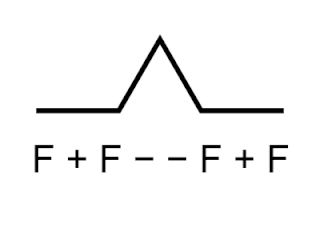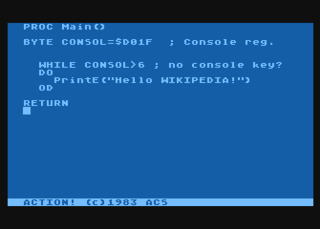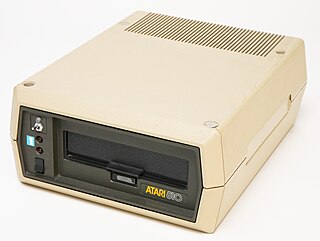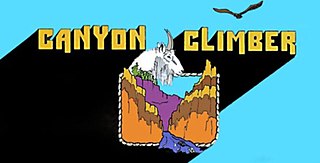
The Atari 5200 SuperSystem or simply Atari 5200 is a home video game console introduced in 1982 by Atari, Inc. as a higher-end complement for the popular Atari Video Computer System. The VCS was renamed to the Atari 2600 at the time of the 5200's launch. Created to compete with Mattel's Intellivision, the 5200 wound up a direct competitor of ColecoVision shortly after its release. While the Coleco system shipped with the first home version of Nintendo's Donkey Kong, the 5200 included the 1978 arcade game Super Breakout which had already appeared on the Atari 8-bit computers and Atari VCS in 1979 and 1981 respectively.

Logo is an educational programming language, designed in 1967 by Wally Feurzeig, Seymour Papert, and Cynthia Solomon. Logo is not an acronym: the name was coined by Feurzeig while he was at Bolt, Beranek and Newman, and derives from the Greek logos, meaning 'word' or 'thought'.

The Atari 8-bit computers, formally launched as the Atari Home Computer System, are a series of home computers introduced by Atari, Inc., in 1979 with the Atari 400 and Atari 800. The architecture is designed around the 8-bit MOS Technology 6502 CPU and three custom coprocessors which provide support for sprites, smooth multidirectional scrolling, four channels of audio, and other features. The graphics and sound are more advanced than most of its contemporaries, and video games are a key part of the software library. The 1980 first-person space combat simulator Star Raiders is considered the platform's killer app.

Brian Moriarty is an American video game developer who authored three of the original Infocom interactive fiction titles, Wishbringer (1985), Trinity (1986), and Beyond Zork (1987), as well as Loom (1990) for LucasArts.

Action! is a procedural programming language and integrated development environment written by Clinton Parker for the Atari 8-bit computers. The language, which is similar to ALGOL, compiles to high-performance code for the MOS Technology 6502 of the Atari computers. Action! was distributed on ROM cartridge by Optimized Systems Software starting in 1983. It was one of the company's first bank-switched 16 kB "Super Cartridges". The runtime library is stored in the cartridge; to make a standalone application requires the Action! Toolkit which was sold separately by OSS.
Optimized Systems Software (OSS) was a company that produced disk operating systems, programming languages with integrated development environments, and applications primarily for Atari 8-bit computers. The founders of OSS previously developed Atari DOS, Atari BASIC, and the Atari Assembler Editor for Atari, Inc., and many OSS products are substantially improved versions. OS A+ and DOS XL are based on Atari DOS. BASIC A+, BASIC XL, and BASIC XE are based on Atari BASIC. EASMD and MAC/65 are modeled on the Atari Assembler Editor. Action! is an ALGOL-inspired compiled programming language with an integrated full-screen editor. OSS also sold some software for the Apple II.

The Atari XG-1 light gun is a video game controller which was released in 1987. Atari's only light gun, it is compatible with the Atari 8-bit computers, Atari 7800, and Atari 2600. It was bundled with the Atari XEGS Deluxe home computer and video game console combination system, and with the light gun game Bug Hunt for the 7800 as model XES2001 for US$34.95. Atari eventually released five light gun games on the 7800 and one on the 2600 (Sentinel).

AtariWriter is a word processor program for the Atari 8-bit computers released by Atari, Inc. as a 16 kB ROM cartridge in 1983. The program was fast and easy to use, while still allowing for the creation of fairly complex documents. It was a success for the platform, with at least 800,000 units initially sold, not including international versions and later updates.

Antic was a print magazine devoted to Atari 8-bit computers and later the Atari ST. It was named after the ANTIC chip in the 8-bit line which, in concert with CTIA or GTIA, generates the display. The magazine was published by Antic Publishing from April 1982 until June/July 1990.Antic printed type-in programs, reviews, and tutorials, among other articles. Each issue contained one type-in game as "Game of the Month." In 1986, STart magazine was spun off to exclusively cover the Atari ST line.

ANALOG Computing was an American computer magazine devoted to Atari 8-bit computers. It was published from 1981 until 1989. In addition to reviews and tutorials, ANALOG printed multiple programs in each issue for users to type in. Almost every issue included a machine language video game—as opposed to Atari BASIC—which were uncommon in competing magazines. Such games were accompanied by the assembly language source code. ANALOG also sold commercial games, two books of type-in software, and access to a custom bulletin-board system. After the Atari ST was released, coverage of the new systems moved to an ST-Log section of the magazine before spinning off into a separate publication under the ST-Log name.
Bank Street Writer is a word processor for the Apple II, Atari 8-bit computers, Commodore 64, MSX, Mac, IBM PC, and IBM PCjr computers. It was designed in 1981 by a team of educators at the Bank Street College of Education in New York City, software developer Franklin E. Smith, and programmers at Intentional Educations in Watertown, Massachusetts. The software was sold in two versions: one for elementary school students published by Scholastic and a general version from Broderbund.
Synapse Software Corporation was an American software developer and publisher founded in 1981 by Ihor Wolosenko and Ken Grant. Synapse published application software and developer tools and was primarily known for video games. It initially focused on the Atari 8-bit computers, then later developed for the Commodore 64 and other systems. Synapse was purchased by Broderbund in late 1984 and the Synapse label retired in 1985.

Many games, utilities, and educational programs were available for Atari 8-bit computers. Atari, Inc. was primarily the publisher following the launch of the Atari 400/800 in 1979, then increasingly by third parties. Atari also distributed "user written" software through the Atari Program Exchange from 1981 to 1984. After APX folded, many titles were picked up by Antic Software.
Happy drives are series of disk drive enhancements for the Atari 8-bit and Atari ST computer families produced by a small company called Happy Computers. Happy Computers is most noted for the add-in boards for the Atari 810 and Atari 1050 floppy disk drives, which achieved a tremendous speed improvement for reading and writing, and for the ability to backup floppies. Happy's products were among the most popular Atari computer add-ons. They were still in use and active in the aftermarket as of 2009.

MAC/65 is a 6502 assembler written by Stephen D. Lawrow for Atari 8-bit computers. MAC/65 was first released on disk by Optimized Systems Software in 1982, with the program requiring 16 KB RAM. A bank switched "SuperCartridge" from OSS followed in January 1984 for US$99, occupying only 8 KB.

The Atari 810 is the official floppy disk drive for the Atari 400 and 800, the first two models of Atari 8-bit computers. It was released by Atari, Inc. in 1980.
Tom Hudson is an American programmer best known for co-creating the 3D modeling and animation package 3D Studio as well as creating its precursor, CAD-3D for the Atari ST.

The Atari joystick port is a computer port used to connect various gaming controllers to game console and home computer systems in the 1970s to the 1990s. It was originally introduced on the Atari 2600 in 1977 and then used on the Atari 400 and 800 in 1979. It went cross-platform with the VIC-20 in 1981, and was then used on many following machines from both companies, as well as a growing list of 3rd party machines like the MSX platform and various Sega consoles.

Canyon Climber is a video game designed by Steve Bjork and James Garon for the TRS-80 Color Computer and published by Tandy Corporation in 1982. Ports to other home computers were published by Datasoft. Canyon Climber is a three-screen platform game with an American Southwest theme. Two of the screens are direct analogs of those in Donkey Kong.

Atari Word Processor is a word processor program for the Atari 8-bit computers, announced by Atari, Inc. in January 1981 and shipped that summer. The program was powerful for its era, including numerous features like superscripts and two-column layouts. It was also quite complex, with a long list of control keys for basic operations and text-based menus for more complex ones. It left little memory free after loading, so longer documents had to be stored as separate files of about a page each and printing demanded a long re-formatting process as they were stitched together.















